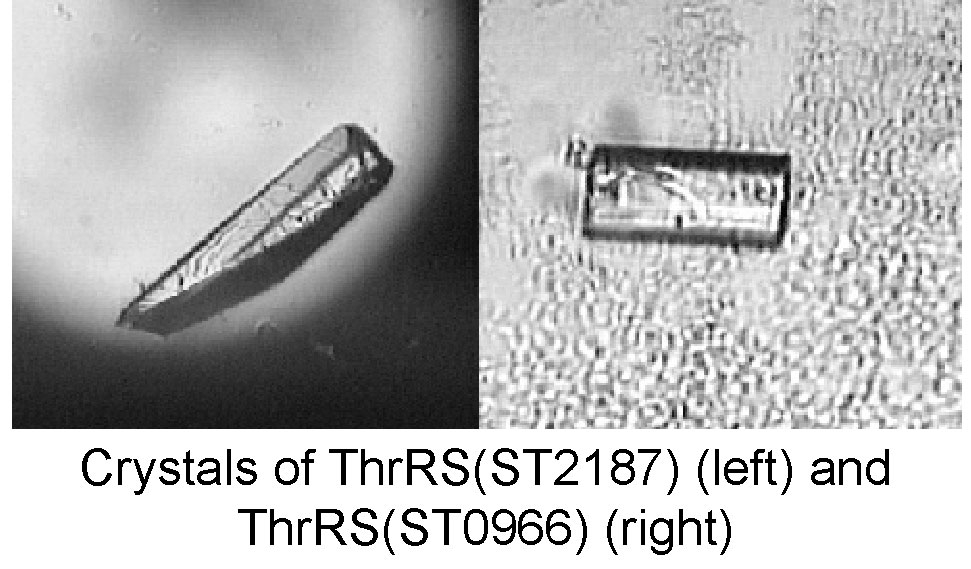
Graduate School of Bioscience and Biotechnology, Tokyo Institute of Technology* College of Science and Engineering, Iwaki-Meisei University, Iwaki, Japan**
○Yuichiro Miyashita* Satoru Shimizu* Yoshiteru Sato* Ella Czarina Magat Juan* Kaoru Suzuki** Takeshi Sekiguchi** Akio Takenaka*
Threonyl-tRNA synthetase (ThrRS) maintains the highest fidelity in protein synthesis by selective-editing of the misacylated aa-tRNAs. The structural architecture of the N-terminal editing domain, catalytic domain and anticodon-binding domain are highly conserved in bacteria and eukaryotes. In archaea Sulfolobus tokodaii, however, the two different genes (ST0966 and ST2187) have been found for ThrRS. Such a two-gene system was also found in Sulfolobus solfataricus. In the latter case, the gene products compensate each other (one for aminoacylation and the other for editing) to complete the reaction. To clarify the reaction mechanism, ST0966 and ST2187 were expressed in E. coli and the corresponding proteins were purified. Crystallization conditions were surveyed at room temperature by the hanging-drop vapor diffusion method. X-Ray data were collected at 100 K with synchrotron radiation of PF. The figure shows the crystals obtained. The ThrRS (ST2187) crystal diffracts at 2.3 Å resolution with the space group P2221 and the cell parameters a= 60.3, b=68.0 and c=134.4 Å. The crystal structure has been solved by MAD phasing using zinc-containing crystals and Se-Met derived crystals.
